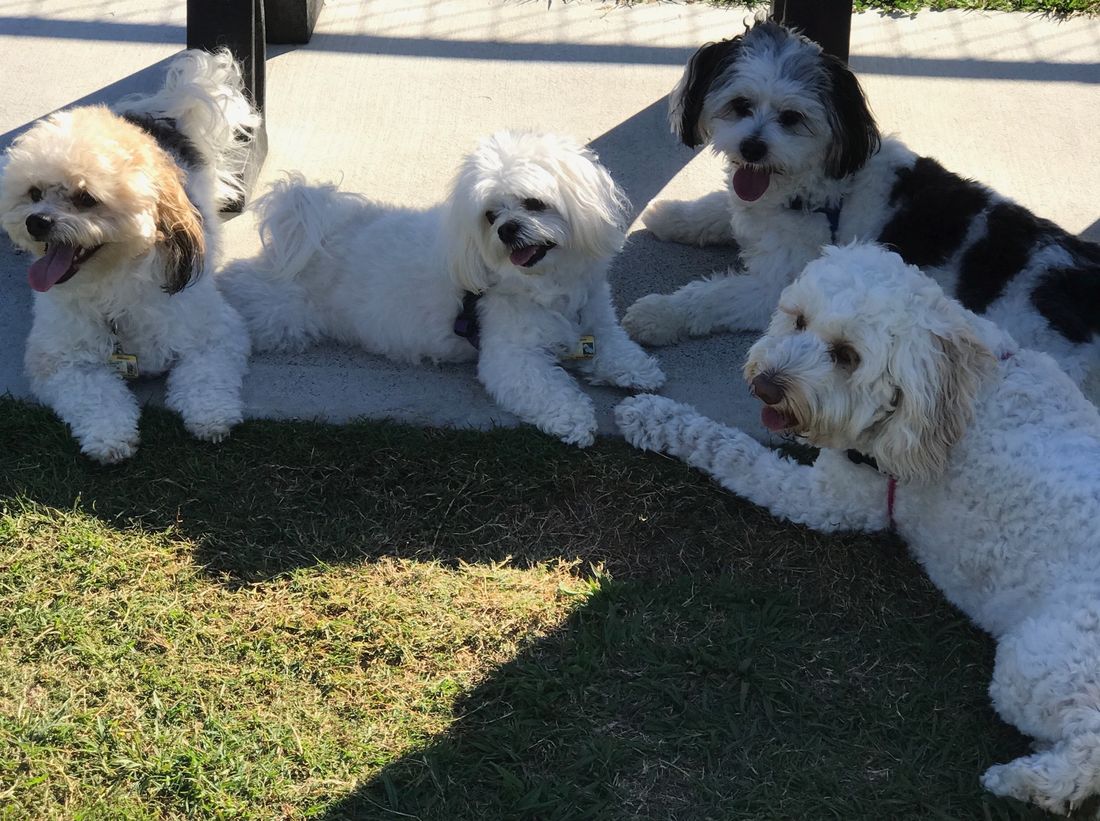Being around other dogs is a walk in the park, pun intended. But making sure they interact on a friendly basis? That's a little bit trickier.
When we first got our Kelpie puppy, Ralph (he's very much not a puppy now, but we still call him that), he was a right pain. He had way too much energy for our other dogs, which were quite old and fragile at the time. They had to teach Ralph to respect his elders. In doing so, he also came to realise that we had as much authority over him as 'grandma and grandpa'.
With age came maturity. Ralph would jump on the dogs and us less and less, admittedly out of fear from being snapped at by 'grandma and grandpa', but still. Lesson learned: no jumping.
Not too long after, we had some family friends come over for a meal. Naturally, we were a bit worried about how that would play out. Would Ralph remember the rules we had set in place?
Predictably, his self-restraint flew out the window. While we knew he was just trying to communicate his enthusiasm, from a guest's perspective it's not always easy to see Ralph's behaviour that way.
With the help of verbal cues and instructing our friends to not encourage his behaviour by turning their backs on him, Ralph finally connected the dots. These rules didn't just apply to our family: they applied to external relationships too.
The situation only improved when we got another dog for him to play with, making for an enormous household at the time. Buster was Ralph's new friend; a partner in crime, really.
Ralph used to get separation anxiety when we'd leave for work or school. But now humans weren't nearly as much fun as someone that would roll around in the mud with you. Any fears of abandonment or loneliness disappeared.
Ralph eventually became even more affectionate and trusting of us. He gave us lots of kisses and cuddles. A little bit too familiar at the beach sometimes but super friendly.
His extroverted personality appeals to breeds such as Labradors, Golden Retrievers, and other Kelpies. They don't mind being barked at. But not all dogs like it and rightly so, might I add. By introducing the much more reserved and mature Buster, Ralph finally had the perfect role model.
He began to imitate Buster's social cues, learning by example how to behave around other dogs and people. Who knew that slowly approaching another dog and giving them a bit of space would make more friends than outright jumping on them?
To this day, while Ralph can still be a cheeky brat who throws the occasional temper tantrum, he's a lot more understanding. His new friends on the street, two and four-legged, appreciate his newfound boundaries.
Really, there's nothing wrong with your pet. It's just a matter of communication. No one expects you to teach your dog how to high five or fist bump. They just need to be taught that dogs and humans have limits, and that everyone deserves a little bit of respect.

